A well thought out design.
Watching Brian dePalma’s splendid Prohibition Era movie The Untouchables the other evening I was struck by just how skilled reportage photographers were in that period. In one early scene, the Treasury Agent Elliot Ness orchestrates a raid on a suspected illegal liquor warehouse and as he prepares to smash open one of the wooden crates he believes contains the hooch, an aspiring press photographer, armed with a Speed Graphic and that enoromous flashgun with the almost as large one-use bulb, bursts in and takes a snap. His men want the reporter removed but Ness, sensing a ‘photo op’ lets him stay. As he picks up the axe to smash the crate, it’s what follows that leaves you lost in admiration. In a choreographed series of actions, the reporter realizes he has used one of the two exposures in his film slide. In the matter of a few seconds, you see him insert the dark slide, pull out the film holder, reinsert it reversed, pull out the second dark slide, change the flashbulb and snap Ness as he pulls out the contents of the crate …. a Japanese decorative umbrella. Ooops. But what the photographer had to go through to get his one chance at the front page is exceptional.
The camera was, amazingly, exceptionally well suited to hand-held use. It came with a decent rangefinder (I dismantled mine to clean the mirrors whereupon it became easy to use), an optical finder with interchangeable masks for different lenses, a wire frame finder easily extended from the body and ideal for reporters’ use and adjustable focus stops. You had a reasonable range of perspective controls thanks to the drop bed, and lens exchange was very simple and fast. Best of all the whole thing collapsed into a surprisingly compact rectangular box and the included carrying handle made for easy transport. It weighed less than the modern DSLR. A large chromed side plate accommodated the flashgun whose handle later did double duty in George Lucas’s ‘Star Wars’ movies as a light sabre!
Until the roll film camera gained acceptance, the reporter’s tool of choice was the Graflex company’s Speed Graphic or later the Crown Graphic. I owned a Crown Graphic for a couple of years, interested in finding out just how it was to use a large format camera. I put together a slide show of my Crown Graphic – long sold – and you can download the 50MB file by clicking or touching the picture below:
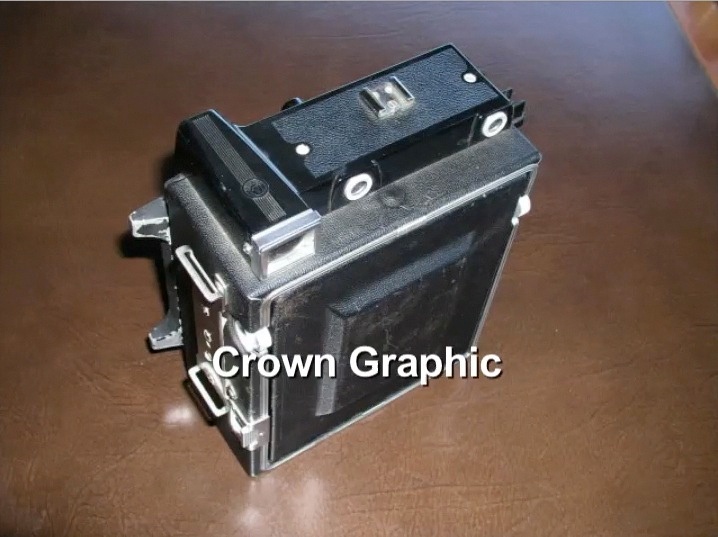
Click the picture to download the slideshow.
Toward the end you can see where I made my own focusing cams for the wide and long focus lenses so as to ensure accurate coupling with the optical rangefinder for hand-held use. A fun project!
Tripod use was every bit as easy and the huge negative size meant that large prints of just about any size were easy to make with frightening resolution. Scanned at 4,000dpi the negative yielded no fewer than 320 megapixels! At 2,000 dpi, more than enough, it came in at 80 megapixels.
I eventually gave up on the Crown for a couple of simple reasons. First, it was impossible to find anyone to process my Kodak Vericolor originals without adding scratches, boot marks and hair lines. This meant endless retouching just as in the bad old film days. Second, getting a good scan of the originals at a reasonable price was also impossible. Drum scans, which would disclose every last detail in every last leaf on that giant sequoia were prohibitively expensive and the scanned files would average over 200MB. Guaranteed to disclose my iMac’s dual purpose design when processed – a computer and a toaster, all in one. But the Crown Graphic was an absolute blast to use. Both color and monochrome film stock remains available if you want to give it a shot. You will not lose any money when it comes time to sell your hardware, but you will need a good changing bag to load those film holders. Just about any lens will do, the large negative making the latest and greatest in optics overkill.
Here are a few snaps:
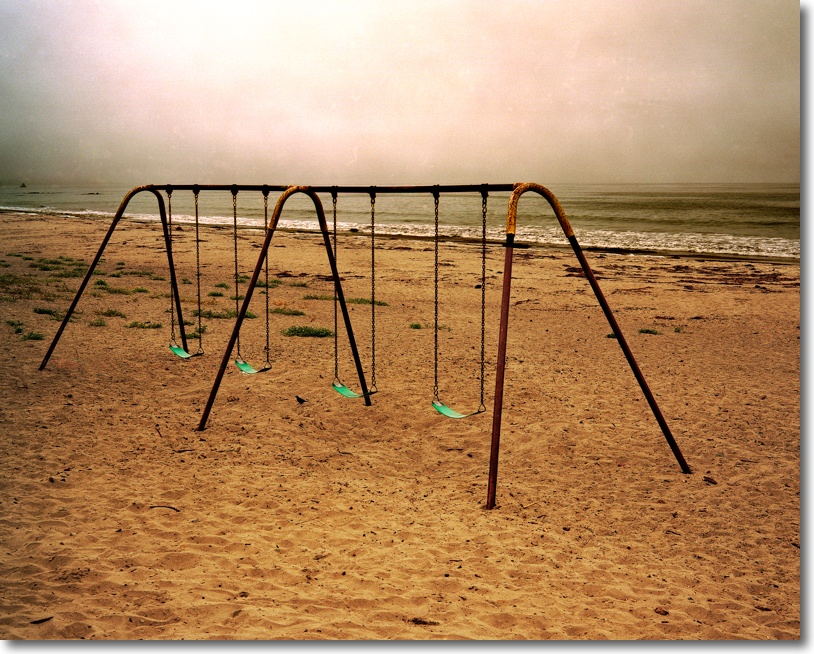
Cayucos beach.
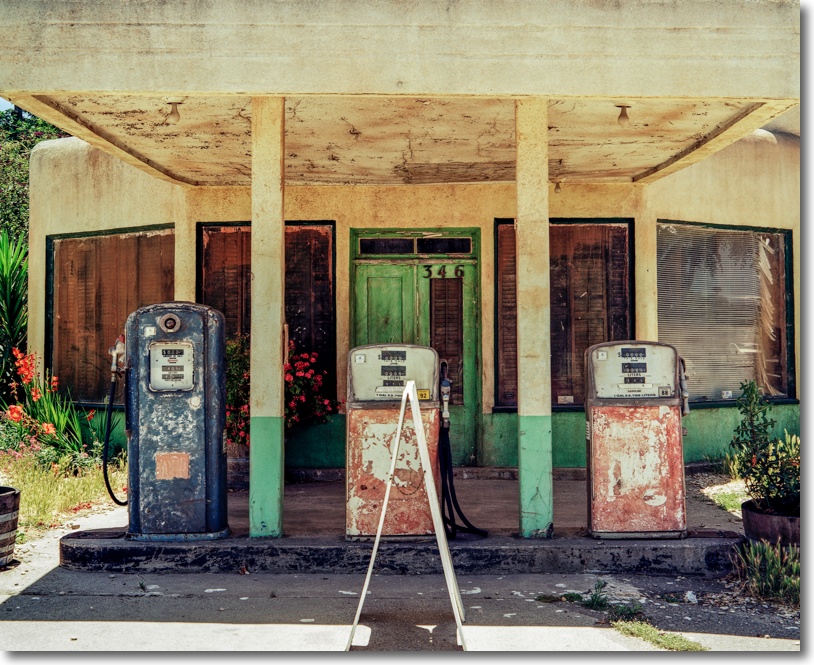
Abandoned gas pumps, Los Alamos, CA.
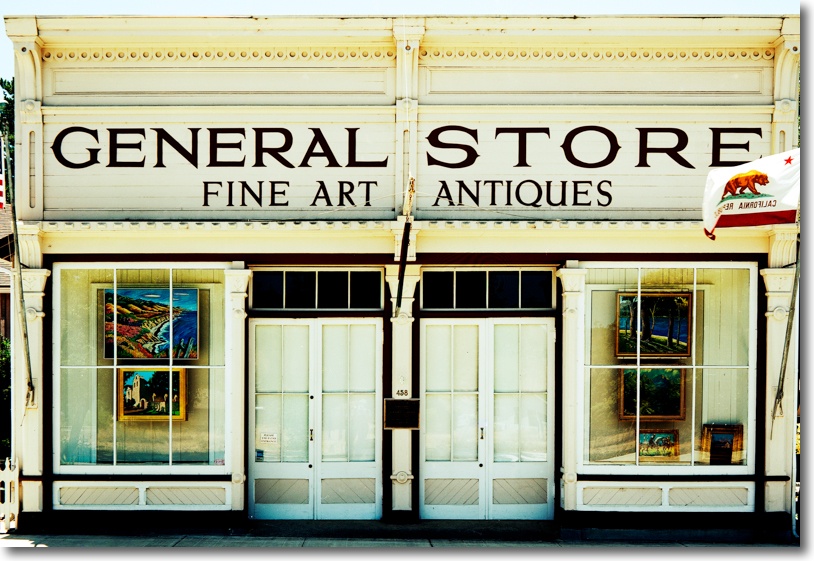
General Store, Los Alamos, CA.
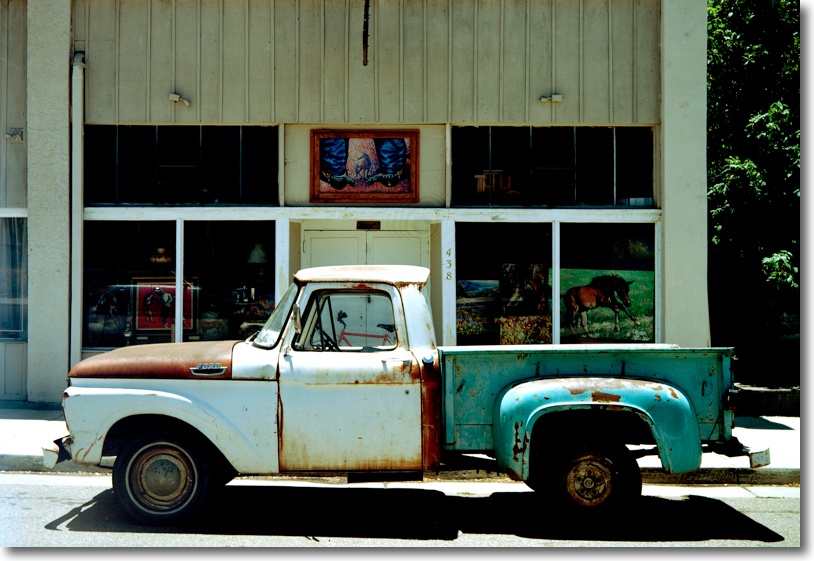
Rust.